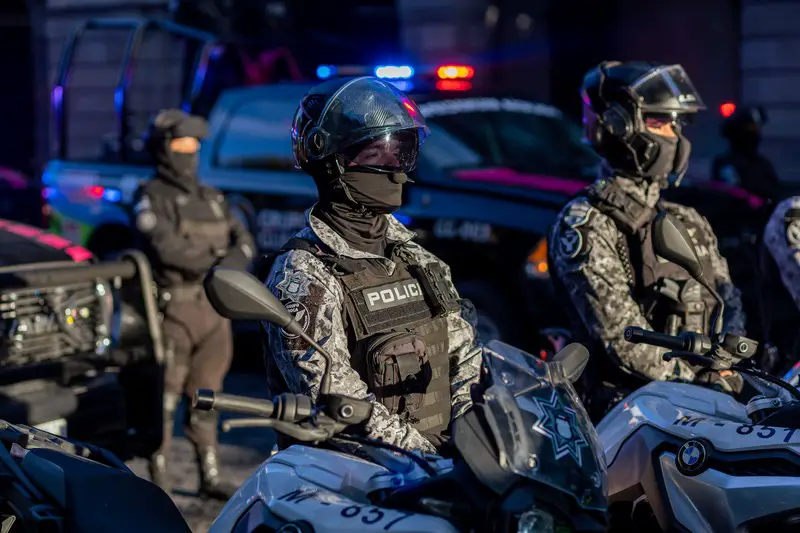Six civilians were reportedly killed in a violent clash between armed groups on Monday, May 20, 2025, near Acapulco, Guerrero, Mexico, highlighting ongoing security challenges in the region.
The confrontation occurred on Monday night in Kilometro 30, a town located on the highway connecting Acapulco to Mexico City, as reported by the Guerrero state prosecutor’s office. Five men and an elderly woman were caught in the crossfire, with three others sustaining injuries.
Adan Casarrubias Flores, the municipal commissioner, confirmed the fatalities and described the fear experienced by residents as armed men in at least three vehicles took part in the clash. “Even if it’s with pans, sticks, or whatever, we’re going to fight for our town,” Casarrubias stated, reflecting the community’s reaction to the increasing violence.
Community accounts, however, suggest that at least 12 individuals lost their lives in the incident.
Witnesses reported that a faction known as “Los Rusos” (The Russians) carried out the attack, arriving in a convoy of at least four vehicles, including an armored Suburban and a truck with a .50-caliber machine gun. Unofficial reports indicate their intent was to gain control of the community.
During the containment efforts, witnesses noted that other vehicles in the criminal convoy were intercepted by the community guard. Four individuals were executed, and their vehicles were set ablaze. Only one pickup truck reportedly escaped, heading toward the Sierra.
This information has not been corroborated by authorities.
The confrontation revealed the sophistication of the violence, with soldiers and police finding weapons inside an armored vehicle at the scene. Several cars were set on fire. The investigation led to the seizure of significant weaponry and equipment, including a long-barreled gun, magazines, cartridges, seven vehicles (one armored), tire-puncturing devices, and five improvised explosive devices.
This incident underscores the worsening security situation in Guerrero state, where approximately 40 armed criminal groups are active. Cartels such as the Jalisco Cartel New Generation, Guerreros Unidos, Viagras, Rojos, Tlacos, Ardillos, Familia Michoacana, and Tequileros compete for control over criminal enterprises in the region.
Acapulco’s transformation from a renowned destination to a city plagued by violence mirrors broader security challenges in Mexico. In the 1950s and 1960s, the coastal city was a hub for the elite. Today, known as the “Pearl of the Pacific,” it faces cartel-related violence that has adversely affected its tourism industry and residents.
Recent incidents demonstrate the persistent threat to the region. On Thursday, May 16, gunmen killed the administrator of a Facebook news page in Acapulco. This violence follows a pattern, as seen in 2024, when authorities discovered 10 bodies in the city in May. A month earlier, assailants killed the traffic police chief far from the resort areas.
In February 2024, two men were found dead on a popular beach, displaying signs of torture. That month, three others were shot on Acapulco beaches, with one attack involving gunmen using a boat for arrival and escape.
The violence extends to the systematic targeting of officials. In December 2024, a judge was shot in his car outside an Acapulco courthouse, highlighting threats to the judicial system from criminal organizations.
Guerrero’s significance to criminal groups is due to its history as a hub for marijuana and poppy cultivation and its emergence as a coca cultivation center, essential for cocaine production. Its location also serves as a key transit point for drug shipments to the U.S.
The criminal landscape has evolved as synthetic substances like methamphetamine and fentanyl replace traditional drugs. This has led to diversification into extortion rackets affecting sectors such as transportation, local businesses, tour guides, religious events, mining, and small stores.
The impact on civilians has been severe, with those refusing to pay extortion fees or comply with criminal group rules facing increased murder risks. This criminal governance grants armed groups control over various aspects of community life.
Violence in Guerrero prompted Roman Catholic bishops to mediate a truce between two drug cartels last year, reflecting the absence of government control in rural areas.
The deteriorating security situation prompted the U.S. State Department to advise against travel to Guerrero, designating it as one of six Mexican states with the highest crime and violence risk. The state is among those accounting for nearly half of Mexico’s homicides, many linked to drug trafficking.
Recent analysis suggests that Mexico’s “hugs, not bullets” policy under former President Andrés Manuel López Obrador did not successfully reduce violence or sustainably disrupt criminal operations. President Claudia Sheinbaum, in office since October 2024, faces a reshaped criminal landscape with potentially heightened violence as gangs fragment and vie for territory.
The economic impact of violence has been substantial. By 2017, insecurity forced an estimated 2,000 business closures in Acapulco. Moody’s analysis indicated a 63 percent decrease in international visitors from 2012 through 2017.
Criminal groups have adopted sophisticated tactics, with reports indicating a doubling in the use of explosives and remote violence compared to previous years. They have adapted commercial drones for combat and employed improvised land mines, grenades, and bombs, signaling an escalation in capabilities.
The Monday night violence in Kilometro 30 is the latest in a conflict that has claimed over 460,000 Mexican lives since the government’s 2006 crackdown on cartels. As criminal groups splinter and compete for resources, communities near Acapulco remain at the center of Mexico’s security crisis.











